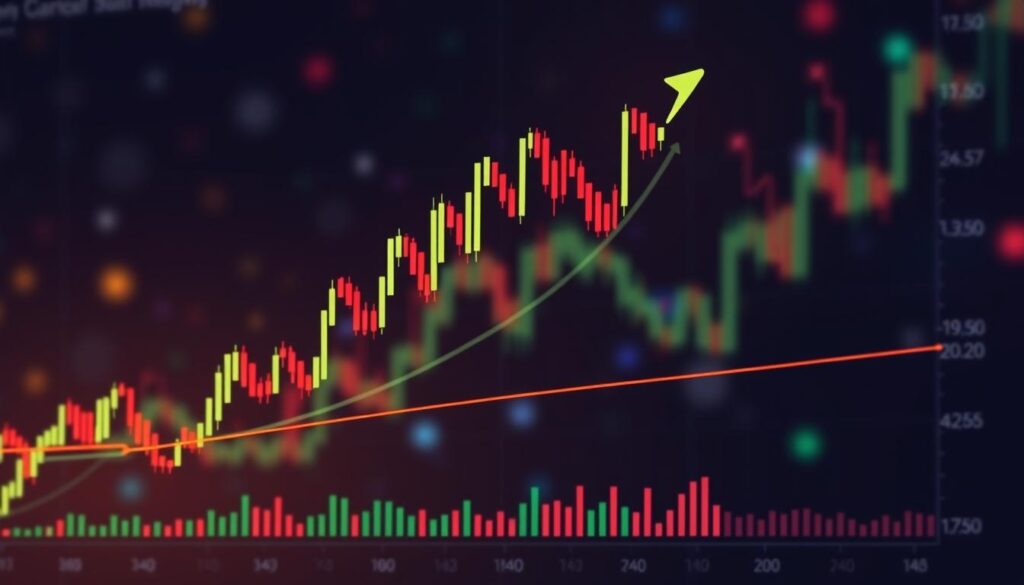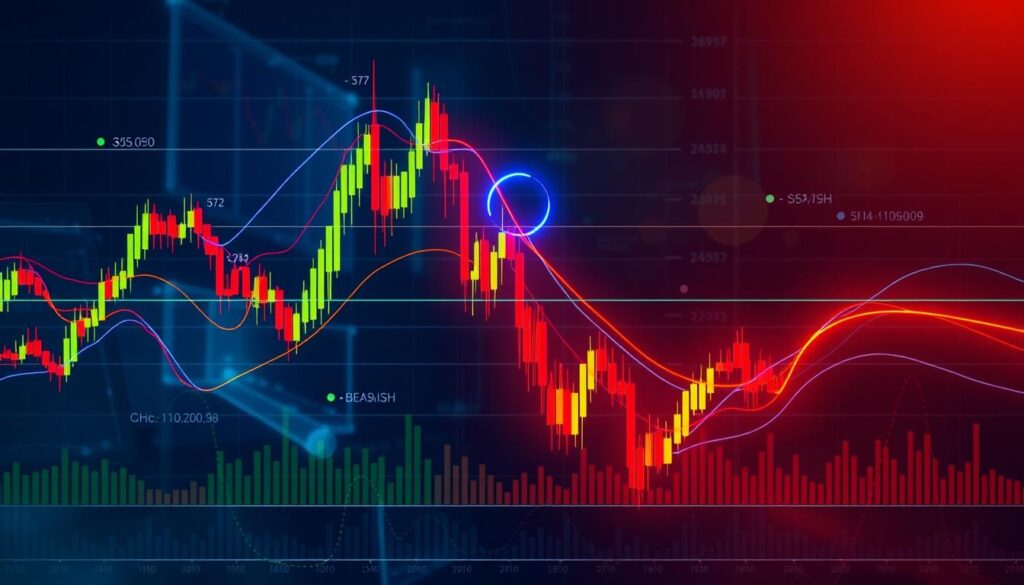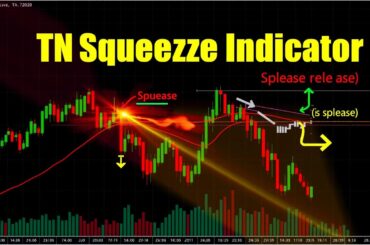Divergence in trading refers to the situation when the price of an asset is moving in the opposite direction of a technical indicator, such as an oscillator, or is moving contrary to other data. This concept is crucial in technical analysis, as it warns that the current price trend may be weakening, and in some cases may lead to the price changing direction. Divergence trading is a valuable tool for traders, as it can signal potential trend reversals or continuations, making it a key aspect of price action analysis.
In the world of technical analysis, divergence plays a significant role in identifying potential trend weaknesses, which can lead to trend reversals or continuations. Traders use divergence to assess momentum and the likelihood of a price reversal, often in combination with oscillators like the Relative Strength Index (RSI). By understanding divergence, traders can gain valuable insights into the market, making informed decisions about their trades.
Table of Contents
Key Takeaways
- Divergence in trading indicates a potential trend reversal or continuation.
- Positive divergence suggests a potential move higher in the price of an asset, while negative divergence signals a possible move lower.
- Divergence is commonly used with oscillators like the Relative Strength Index (RSI) to assess momentum and price reversal likelihood.
- Traders should use multiple indicators and techniques to confirm divergence before acting on it solely.
- Divergence does not guarantee immediate price reversal, and caution should be exercised before acting solely based on divergence signals.
- Divergences offer reliable high-quality trading signals when combined with other tools and concepts.
Understanding the Basics of Divergence in Trading
Trading divergence is a concept used in market analysis to identify potential changes in price momentum. It occurs when there is a discrepancy between the price of an asset and the indicators used to measure its momentum. This discrepancy can signal a potential reversal in the market trend, making it an important tool for traders to understand and use in their market analysis.
Divergence patterns can be either positive or negative. Positive divergence indicates a potential move higher in the price of the asset, while negative divergence signals a potential move lower. By recognizing these patterns, traders can adjust their strategies to take advantage of potential changes in the market.
Some common indicators used to identify divergence patterns include the Relative Strength Index (RSI), stochastics, and the rate of change. These indicators measure the momentum of an asset’s price and can be used to identify potential divergences. By combining these indicators with other forms of market analysis, traders can gain a more complete understanding of the market and make more informed trading decisions.
Understanding divergence patterns is crucial for traders, as it can help them to identify potential changes in the market trend and adjust their strategies accordingly. By recognizing the signs of divergence, traders can take advantage of potential trading opportunities and minimize their risk of losses.
The Fundamental Principles of Price Action and Indicators
Understanding price action is crucial in trading, as it helps traders identify trends and patterns in the market. Technical indicators are also essential tools used to analyze price action and make informed trading decisions. By combining price action and technical indicators, traders can develop effective trading principles to guide their investment strategies.
Some key technical indicators used in trading include the Relative Strength Index (RSI), Moving Average Convergence Divergence (MACD), and Stochastic Oscillator. These indicators help traders identify overbought and oversold conditions, trends, and potential reversals in the market. By analyzing price action and technical indicators, traders can develop a comprehensive understanding of the market and make informed trading decisions based on trading principles.
Effective traders use a combination of price action and technical indicators to develop their trading principles. This approach helps them stay ahead of the market and make profitable trades. By understanding the fundamental principles of price action and indicators, traders can refine their strategies and achieve success in the markets.
Types of Divergence Signals
Divergence signals are a crucial aspect of trading, helping traders identify potential changes in price direction. There are several types of divergence signals, including regular divergence and hidden divergence. Regular divergence occurs when there is a mismatch between the price action and the indicator, signaling a potential trend reversal. Hidden divergence, on the other hand, occurs when the indicator and price action are moving in the same direction, but the indicator is showing a weaker signal, suggesting a continuation of the current trend.
Understanding the different types of divergence signals is essential for traders to make informed decisions. Regular divergence is further divided into two types: regular bullish divergence and regular bearish divergence. Regular bullish divergence occurs when the indicator shows higher lows while the actual market price shows lower lows, indicating a potential upward trend. Regular bearish divergence, however, occurs when the indicator shows lower highs and the actual market price reveals higher highs, signaling a potential downward trend.
Hidden divergence is also divided into two types: hidden bullish divergence and hidden bearish divergence. Hidden bullish divergence happens when the indicator displays lower lows and the actual market price shows higher lows, suggesting a continuation of the upward trend. Hidden bearish divergence occurs when the indicator exhibits higher highs and the actual market price demonstrates lower highs, indicating a continuation of the downward trend. Recognizing these divergence signals can help traders anticipate potential changes in price direction and make more accurate predictions.
The following table summarizes the different types of divergence signals:
| Type of Divergence | Description |
|---|---|
| Regular Bullish Divergence | Indicator shows higher lows, price shows lower lows |
| Regular Bearish Divergence | Indicator shows lower highs, price shows higher highs |
| Hidden Bullish Divergence | Indicator shows lower lows, price shows higher lows |
| Hidden Bearish Divergence | Indicator shows higher highs, price shows lower highs |
By understanding the different types of hidden divergence and regular divergence signals, traders can improve their trading strategies and make more informed decisions. It is essential to recognize these signals and use them in conjunction with other technical indicators to maximize trading potential.
Essential Technical Indicators for Divergence Trading
When it comes to divergence trading, technical indicators play a crucial role in identifying potential buy and sell signals. Among the most commonly used indicators are RSI, MACD, and Stochastic Oscillator. These technical indicators help traders detect divergences between the price action and the indicator’s movement, which can be a powerful tool for predicting market reversals.
A key aspect of divergence trading is understanding how each indicator works and how to interpret their signals. For instance, the RSI is a momentum oscillator that measures the speed and change of price movements, while the MACD is a trend-following indicator that identifies changes in the trend. The Stochastic Oscillator, on the other hand, compares the closing price to its price range over a given period. By combining these technical indicators, traders can increase the accuracy of their divergence signals.
Some of the most effective technical indicators for divergence trading include:
- RSI: measures the magnitude of recent price changes to determine overbought or oversold conditions
- MACD: identifies changes in the trend by comparing two moving averages
- Stochastic Oscillator: compares the closing price to its price range over a given period to identify overbought or oversold conditions
By mastering these technical indicators and learning how to interpret their signals, traders can develop a robust divergence trading strategy that helps them stay ahead of the market. Whether you’re a seasoned trader or just starting out, understanding the power of RSI, MACD, and Stochastic Oscillator can be a game-changer in your trading journey.
Reading RSI Divergence Patterns
RSI divergence occurs when the price of an asset and the RSI indicator move in opposite directions, providing valuable insights for traders. To effectively read RSI divergence patterns, it’s essential to understand how to identify overbought conditions and oversold opportunities. The RSI compares the average gain and the average loss over a certain period, helping traders detect potential trend reversals.
Traders can use the RSI divergence strategy by visiting relevant trading resources to learn more about the topic. By analyzing RSI divergence, traders can identify overbought conditions when the RSI is above 70 and oversold opportunities when it is below 30.
Identifying Overbought Conditions
When the RSI is above 70, it indicates that the asset is overbought, and a potential downtrend may occur. Traders can look for bearish RSI divergence signals, where the price reaches higher highs, but the RSI forms lower highs.
Spotting Oversold Opportunities
Conversely, when the RSI is below 30, it indicates that the asset is oversold, and a potential uptrend may occur. Traders can look for bullish RSI divergence signals, where the price reaches lower lows, but the RSI forms higher lows.
Time Frame Considerations
RSI divergence signals tend to be more accurate on longer time frames, such as 1-hour charts. Traders should consider the time frame when analyzing RSI divergence to ensure they are making informed trading decisions.
MACD Divergence Strategies
MACD divergence is a popular topic in trading, often cited as a reason for trend reversals. When using MACD divergence, it’s essential to combine it with other analysis techniques, such as trend analysis, to make more robust trading decisions. By analyzing the relationship between the MACD line and the signal line, traders can identify potential reversals in the market.
Some common issues with MACD divergence include false positives and the occurrence of divergence in sideways markets. To overcome these limitations, traders can use price action analysis alongside MACD divergence. Price action is crucial when using MACD divergence, as it can help confirm or reject the signals generated by the indicator.
Here are some tips for using MACD divergence in trading strategies:
- Wait for price confirmation before entering a trade based on MACD divergence.
- Combine MACD divergence with other forms of market analysis, such as support and resistance levels.
- Use customized MACD settings to suit your trading strategy.
By following these tips and using MACD divergence in conjunction with other analysis techniques, traders can develop effective trading strategies that take into account the complexities of the market. Remember to always trust price action more than divergence and to analyze price action alongside divergence to compensate for the limitations of using MACD divergence alone.
Using Stochastic Oscillator for Divergence Analysis
The Stochastic Oscillator is a versatile tool used in divergence analysis, helping traders identify potential trend reversals. It consists of two main components: the fast stochastic and the slow stochastic. The fast stochastic is more sensitive to price changes, while the slow stochastic provides a smoother signal.
When using the Stochastic Oscillator for divergence analysis, it’s essential to understand the difference between the fast and slow stochastic. The fast stochastic is used to generate buy and sell signals, while the slow stochastic is used to confirm these signals. By combining the Stochastic Oscillator with other indicators, such as moving averages or RSI, traders can create a more robust trading strategy.
Here are some key points to consider when using the Stochastic Oscillator:
- The Stochastic Oscillator moves between 0 and 100, reflecting an asset’s price relative to a given time frame.
- Overbought conditions are considered when the indicator is above 80, while oversold conditions are below 20.
- Divergence can be bearish (price makes a new high, but Stochastic fails to reach a new high) or bullish (price makes a new low, but Stochastic doesn’t).
By understanding how to use the Stochastic Oscillator for divergence analysis, traders can improve their trading decisions and increase their chances of success. Remember to always combine the Stochastic Oscillator with other indicators and to wait for price confirmation before entering a trade.
| Indicator | Description |
|---|---|
| Stochastic Oscillator | A versatile tool used in divergence analysis |
| Fast Stochastic | More sensitive to price changes |
| Slow Stochastic | Provides a smoother signal |
Common Divergence Trading Mistakes to Avoid
When using divergence in trading, it’s essential to be aware of common mistakes that can lead to trading mistakes and significant losses. One of the primary concerns is the occurrence of false signals, which can be misleading and result in impulsive trading decisions.
To avoid these pitfalls, traders should focus on risk management and implement strategies to minimize potential losses. This includes setting stop-loss orders, diversifying the portfolio, and waiting for confirmation signals before entering trades.
Identifying False Signals
False signals can be identified by analyzing the market trends and looking for confirmation from other indicators. Traders should also be cautious of overtrading based solely on divergence signals, as this can lead to significant losses.
Some key strategies to avoid trading mistakes include:
- Waiting for a brief pullback before entering a trade
- Avoiding entering trades based on divergence alone
- Waiting for confirmation signals such as candlestick patterns
By implementing these strategies and focusing on risk management, traders can minimize the occurrence of false signals and make more informed trading decisions.
| Indicator | Timeframe | Signal |
|---|---|---|
| MACD | 15-minute | Bullish divergence |
| CCI | 1-hour | Bearish divergence |
| Stochastic | 30-minute | Overbought condition |
By being aware of these common mistakes and implementing effective risk management strategies, traders can improve their chances of success in divergence trading and avoid trading mistakes.
Creating Your Divergence Trading Strategy
To develop a successful trading strategy, it’s essential to combine divergence signals with other forms of market analysis. This approach helps you set clear entry and exit points, determine an appropriate risk-reward ratio, and make informed trading decisions. A well-structured trading plan should include a thorough understanding of the markets, the ability to identify potential trading opportunities, and a clear plan for managing risk.
When creating your divergence trading strategy, consider the following key elements:
- Identify the type of divergence: regular, hidden, or extended
- Choose the right indicators: MACD, RSI, or stochastic
- Determine the market structure: uptrend, downtrend, or sideways
- Set clear entry and exit points: based on divergence signals and other forms of analysis
- Manage risk: using a suitable risk-reward ratio and position sizing
A comprehensive trading strategy should also include a plan for ongoing market analysis and adaptation to changing market conditions. By combining divergence analysis with other forms of analysis, you can create a robust trading strategy that helps you achieve your trading goals.
Remember, a successful trading strategy is one that is tailored to your individual trading style and risk tolerance. By taking the time to develop a well-structured plan and combining divergence analysis with other forms of market analysis, you can improve your trading performance and achieve long-term success.
Advanced Divergence Trading Techniques
As traders gain experience, they can incorporate advanced trading techniques into their strategy. One such technique is multiple time frame analysis, which involves analyzing the same asset across different time frames to identify trends and patterns. This approach can help traders identify complex divergence patterns, which can be a powerful indicator of potential trend reversals.
Using multiple time frame analysis can help traders filter out false signals and focus on high-probability trades. By analyzing the same asset across different time frames, traders can identify areas of support and resistance, which can be used to inform their trading decisions.
Multiple Time Frame Analysis
This technique involves analyzing the same asset across different time frames, such as the 1-hour, 4-hour, and daily charts. By doing so, traders can identify trends and patterns that may not be visible on a single time frame.
Combining Multiple Indicators
Another advanced technique is combining multiple indicators, such as the RSI and MACD, to form a comprehensive trading strategy. This approach can help traders identify complex divergence patterns and make more informed trading decisions.
Complex Divergence Patterns
Complex divergence patterns, such as hidden bullish and bearish divergences, can be a powerful indicator of potential trend reversals. By using advanced trading techniques, such as multiple time frame analysis and combining multiple indicators, traders can identify these patterns and make more informed trading decisions.
Real-World Examples of Successful Divergence Trades
Studying trading examples can provide valuable insights for improving one’s own trading strategy. Analyzing successful trades and case studies helps traders understand what makes a trade successful and how to apply those lessons to their own trading.
A key aspect of successful divergence trading is the ability to identify and act on trading examples that demonstrate a clear divergence between price action and indicator trends. By examining successful trades and case studies, traders can gain a deeper understanding of how to effectively use indicators such as the MACD, RSI, and Stochastic Oscillator to identify potential trend reversals.
Some notable trading examples include:
- Using the MACD indicator to identify a bearish divergence, where the price action is increasing while the MACD lines are decreasing.
- Identifying a bullish divergence using the RSI indicator, where the price action is decreasing but the RSI is trending higher.
- Combining the Stochastic Oscillator with other indicators to confirm a divergence signal and set stop-loss orders accordingly.
By studying these case studies and trading examples, traders can develop a more effective trading strategy that incorporates the principles of divergence trading. Effective risk management techniques, such as setting stop-loss orders and maintaining a sensible risk-to-reward ratio, are also crucial for continual trading growth.
Ultimately, the key to successful divergence trading is to stay informed, adapt to changing market conditions, and continually refine one’s trading strategy based on successful trades and case studies.
| Indicator | Signal | Action |
|---|---|---|
| MACD | Bearish divergence | Sell |
| RSI | Bullish divergence | Buy |
| Stochastic Oscillator | Bullish divergence | Buy |
Best Markets for Divergence Trading
Divergence trading can be applied to various markets, including forex, cryptocurrency, and stock markets. Each market has its unique characteristics that make it suitable for divergence trading. When it comes to forex trading, the high liquidity and volatility of currency pairs make it an ideal market for identifying divergences.
In cryptocurrency trading, the market’s volatility and unpredictability create opportunities for divergence trading. Meanwhile, stock trading offers a wide range of assets to trade, from individual stocks to indices and ETFs. Here are some key characteristics of each market:
- Forex Markets: high liquidity, volatile currency pairs
- Cryptocurrency Markets: highly volatile, unpredictable price movements
- Stock Markets: diverse range of assets, varying levels of liquidity
By understanding the unique characteristics of each market, traders can develop effective divergence trading strategies tailored to their needs and risk tolerance. Whether it’s forex trading, cryptocurrency trading, or stock trading, the key to success lies in identifying and capitalizing on divergences in the market.
Risk Management in Divergence Trading
Effective risk management is crucial for long-term success in divergence trading. This involves setting stop-loss orders to limit potential losses and using position sizing to manage the amount of capital invested in each trade. By implementing these strategies, traders can minimize losses and optimize trading outcomes.
A key aspect of risk management is maintaining a healthy risk-reward ratio. This means that the potential reward for a trade should be greater than the potential risk. Traders can achieve this by setting realistic profit targets and adjusting their position size accordingly. Risk management is an ongoing process that requires continuous monitoring and adjustment of trading strategies.
Some key strategies for effective risk management in divergence trading include:
- Setting stop-loss orders to limit potential losses
- Using position sizing to manage the amount of capital invested in each trade
- Maintaining a healthy risk-reward ratio
- Continuously monitoring and adjusting trading strategies
By incorporating these strategies into their trading plan, traders can effectively manage risk and increase their chances of success in divergence trading. Remember, risk management is an essential component of any successful trading strategy, and it should be given top priority when trading with divergence.
| Risk Management Strategy | Description |
|---|---|
| Stop-Loss Orders | Setting a price level to automatically close a trade and limit losses |
| Position Sizing | Managing the amount of capital invested in each trade to control risk |
| Risk-Reward Ratio | Maintaining a healthy balance between potential risk and potential reward |
Tools and Software for Divergence Analysis
When it comes to divergence analysis, having the right tools and software can make a significant difference in identifying potential trading opportunities. Trading platforms such as NinjaTrader, which is used by over 40,000 traders, offer advanced market analysis, professional charting, and fast order execution. These platforms often provide built-in divergence indicators and scanners that can help traders identify potential divergences in the market.
In addition to trading platforms, there are also standalone tools and software that can aid in divergence analysis. For example, the Precision Divergence Finder Indicator by Roger Medcalf of Precision Trading Systems is a popular tool among traders. This indicator can measure up to twenty divergences at once using multiple look-back periods up to a maximum of 200 bars, making it a powerful tool for identifying potential trading opportunities.
Popular Trading Platforms and Divergence Indicators
Some popular trading platforms that offer divergence indicators and scanners include:
- NinjaTrader
- ZoneTraderPro
- SharkIndicators BloodHound
These platforms and tools can help traders identify potential divergences in the market, but it’s essential to remember that no tool or software can replace a trader’s analytical skills. Effective risk management, including setting stop-loss orders, is crucial when using these tools to ensure that traders can maximize their profits while minimizing their losses.
By combining the right trading platforms, divergence indicators, and trading software, traders can gain a competitive edge in the market. Whether you’re a seasoned trader or just starting out, having the right tools and software can make a significant difference in your trading success.
| Trading Platform | Divergence Indicators | Scanners |
|---|---|---|
| NinjaTrader | Yes | Yes |
| ZoneTraderPro | Yes | Yes |
| SharkIndicators BloodHound | Yes | Yes |
Conclusion: Mastering Divergence for Trading Success
As we conclude this comprehensive guide, the key to trading success lies in continuously learning, adapting, and refining your divergence trading strategies. Trading success is not a destination, but a journey that requires patience, discipline, and a willingness to embrace continuous learning. By staying attuned to market adaptations and incorporating new techniques, you’ll be better equipped to navigate the ever-changing financial landscape.
Remember, divergence trading is not a one-size-fits-all approach. Regularly revisiting your methods, testing new indicators, and fine-tuning your risk management will help you remain agile and responsive to market dynamics. With dedication and a growth mindset, you’ll be well on your way to mastering the art of divergence trading and achieving consistent, profitable results.
FAQ
What is Trading Divergence?
Trading divergence refers to the concept of price action and technical indicators moving in opposite directions, which can signal potential trend reversals or continuations.
Why is Divergence Important in Market Analysis?
Divergence is a valuable tool for traders, as it can provide insights into market sentiment and potential shifts in market direction. Understanding divergence can help traders make more informed trading decisions.
What is the Psychology Behind Divergence Patterns?
Divergence patterns often form due to the psychology of market participants, reflecting changes in market sentiment and the potential for upcoming trend changes.
What are the Different Types of Divergence Signals?
The main types of divergence signals include regular (classic) divergence, hidden divergence, and the difference between positive and negative divergence.
What are the Most Commonly Used Technical Indicators for Divergence Trading?
Some of the most popular technical indicators for divergence trading include the Relative Strength Index (RSI), Moving Average Convergence Divergence (MACD), and Stochastic Oscillator.
How Can I Identify Divergence Patterns Using the RSI Indicator?
To identify divergence patterns using the RSI indicator, you need to look for instances where the price action and the RSI indicator are moving in opposite directions, particularly in overbought and oversold conditions.
What Strategies Can I Use for Trading MACD Divergence?
When trading MACD divergence, you can use strategies that focus on confirming trend reversals or continuations, by analyzing the relationship between the MACD line and the price action.
How Can I Incorporate the Stochastic Oscillator into Divergence Trading?
The Stochastic Oscillator can be used in divergence trading by analyzing the relationship between the fast and slow stochastic lines, and combining this information with other technical indicators for more accurate signals.
What are the Common Mistakes to Avoid in Divergence Trading?
Some common mistakes to avoid in divergence trading include relying solely on divergence signals, not managing risk effectively, and failing to identify false signals.
How Can I Create an Effective Divergence Trading Strategy?
To create an effective divergence trading strategy, you should focus on combining divergence signals with other forms of analysis, setting clear entry and exit points, and determining an appropriate risk-reward ratio.









